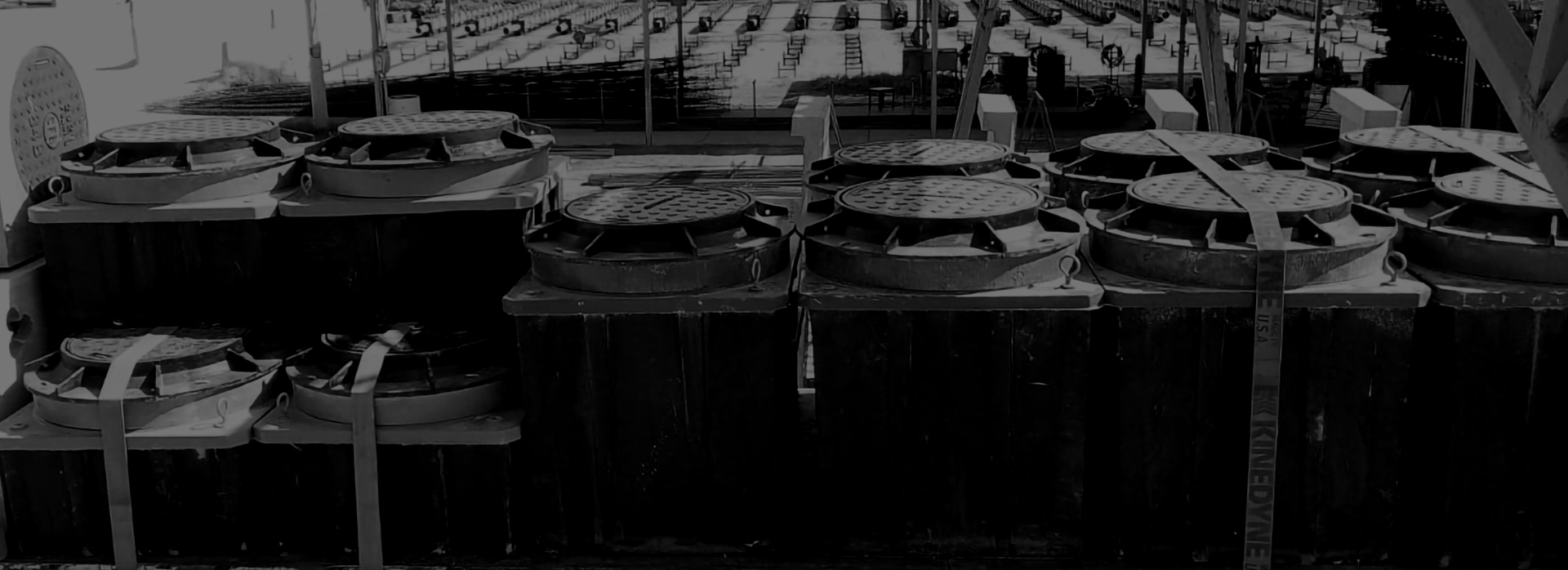Picture the city’s underground network as a circulatory system. Power cables are arteries, fiber-optic lines are nerves, and drainage conduits are veins. But how do engineers safely access these “lifelines” without tearing open the entire street each time?
The answer lies in access chambers. These underground enclosures provide safe entry points to vital networks—electric grids, telecommunications, water infrastructure, and even public lighting systems. Without them, maintenance would be slow, disruptive, and costly.
As cities grow denser and utilities expand, modern access chambers have become indispensable in designing resilient infrastructure.

Types and Materials of Access Chambers
By Material
Precast Concrete and Hydraulic Concrete
For decades, concrete has been the standard material for access chambers. It’s durable, cost-effective, and widely available. Precast units are manufactured off-site and transported, while cast-in-place chambers are built directly in the excavation. However, concrete is heavy, labor-intensive to install, and often requires cranes or specialized equipment.
Polymeric Concrete
Polymeric concrete replaces traditional cement with resin binders combined with mineral aggregates. The result is a material that is lighter, stronger, and more resistant to chemical corrosion. For access chambers, this translates into faster installation and extended service life, especially in aggressive soil conditions.
FRP (Fiber Reinforced Polymer)
Fiber-reinforced polymer (commonly fiberglass composites) is one of the fastest-growing alternatives. It offers high strength-to-weight ratio, non-conductivity, resistance to corrosion, and impressive durability.
By Construction Method
Modular / Stackable Systems
Modular chambers are built from stackable rings or panels. Depth can be adjusted on-site simply by adding more sections, allowing technicians to build chambers quickly inside the excavation.
Self-Supporting / Structural Chambers
These chambers are engineered to resist lateral soil pressure without requiring external reinforcement or concrete backfill. Their monolithic design distributes loads effectively, making installation easier and reducing civil works.
Traditional On-Site Construction
Still common in some regions, this method involves building chambers in place using bricks, blocks, or poured concrete. While inexpensive in terms of materials, it is slow, labor-intensive, and prone to variations in quality and watertightness.
Benefits of Modern Access Chambers
Key Benefits
Faster Installation
Prefabricated modular systems can be installed in hours instead of days. This minimizes disruption to traffic and reduces labor costs.
Lighter Weight and Lower Logistics Costs
Composite and modular chambers weigh far less than traditional concrete versions. They can be transported in smaller trucks, handled by fewer workers, and installed without heavy machinery.
Flexibility and Modularity
Knock-out entry points, adjustable depth, and customizable dimensions make today’s chambers adaptable to multiple applications from telecom ducts to power distribution nodes.

Practical Applications of Access Chambers
Power Distribution and Energy Networks
Access chambers serve as junctions for underground cables, splicing points, and transformer connections. They enable routine inspection without major excavation.
Telecommunications and Fiber Optics
In fiber-optic networks, chambers allow splicing, rerouting, and testing. As demand for high-speed internet grows, these chambers are crucial in expanding and maintaining resilient networks.
Water Infrastructure and Drainage Systems
In stormwater and sewer networks, access chambers provide entry points for cleaning, inspection, and monitoring flow. They reduce downtime and ensure easier maintenance in urban drainage systems.
Public Lighting and Urban Zones
For urban lighting, chambers house cable joints and control systems beneath sidewalks, making it possible to maintain streetlights without disturbing pedestrian areas.
Prefabricated Access Chambers in Concrete and Composites
Concrete vs. Composites
Some leading prefabrication plants in Mexico produce both concrete and composite chambers. While traditional hydraulic concrete remains common, FRP versions provide significant weight reductions, easier handling, and corrosion resistance.
Logistical Advantages
Lighter chambers mean fewer workers, smaller trucks, and no cranes. This dramatically reduces project costs and timelines, especially in urban areas where heavy machinery access is limited.
Conclusion
Access chambers may seem like minor elements hidden beneath our streets, but they are the gateways to the lifeblood of modern cities. From energy to data to water, they make underground networks maintainable, safe, and future-proof.
The transition from heavy, brick-built chambers to modular, composite, and precast systems represents a leap in efficiency and innovation. Choosing the right chamber means balancing load, soil conditions, duct compatibility, and regulatory compliance.

 Eléctrica
Eléctrica
 Telecomunicaciones
Telecomunicaciones
 Alumbrado público
Alumbrado público
 Hidráulica
Hidráulica

